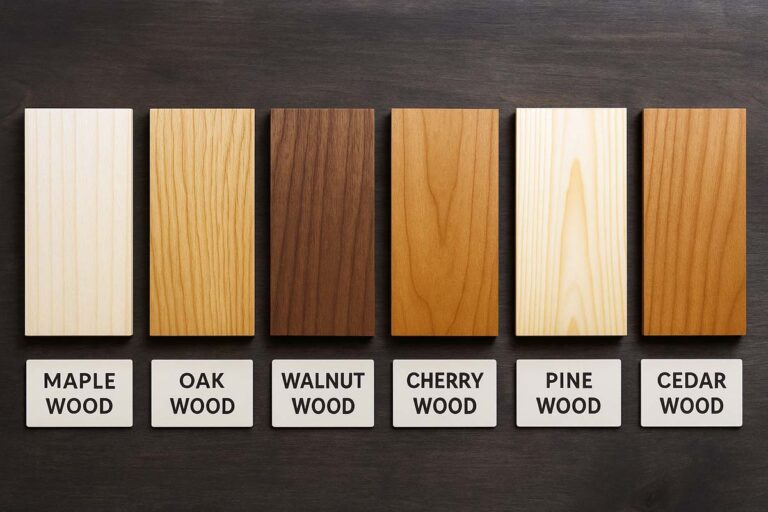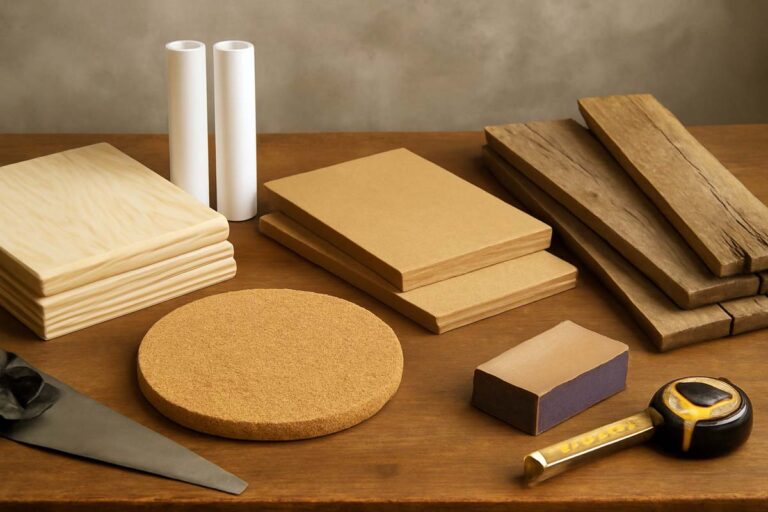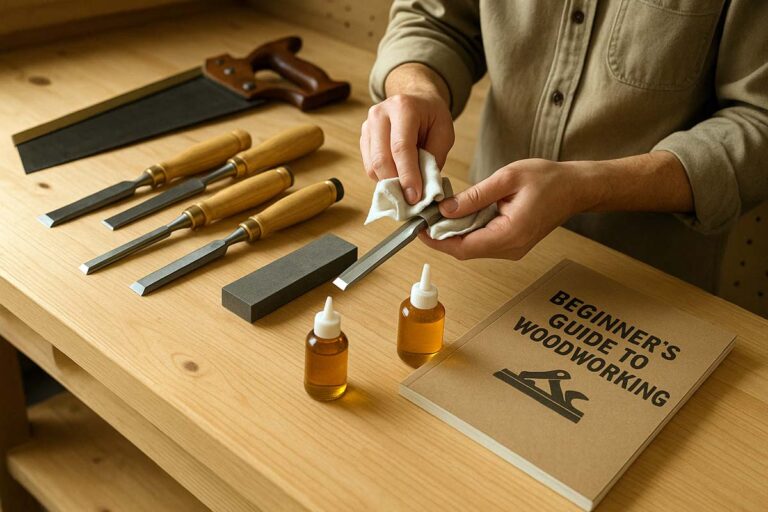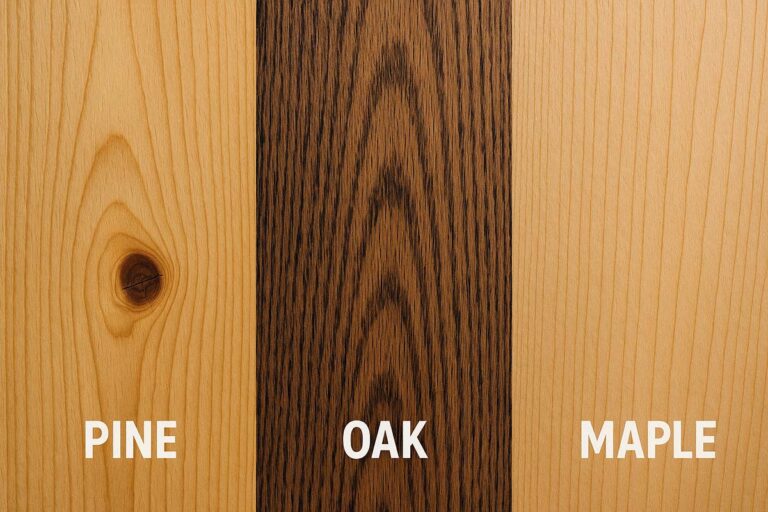Essential Safety Gear for Tray Stand Builds: Crafting with Care
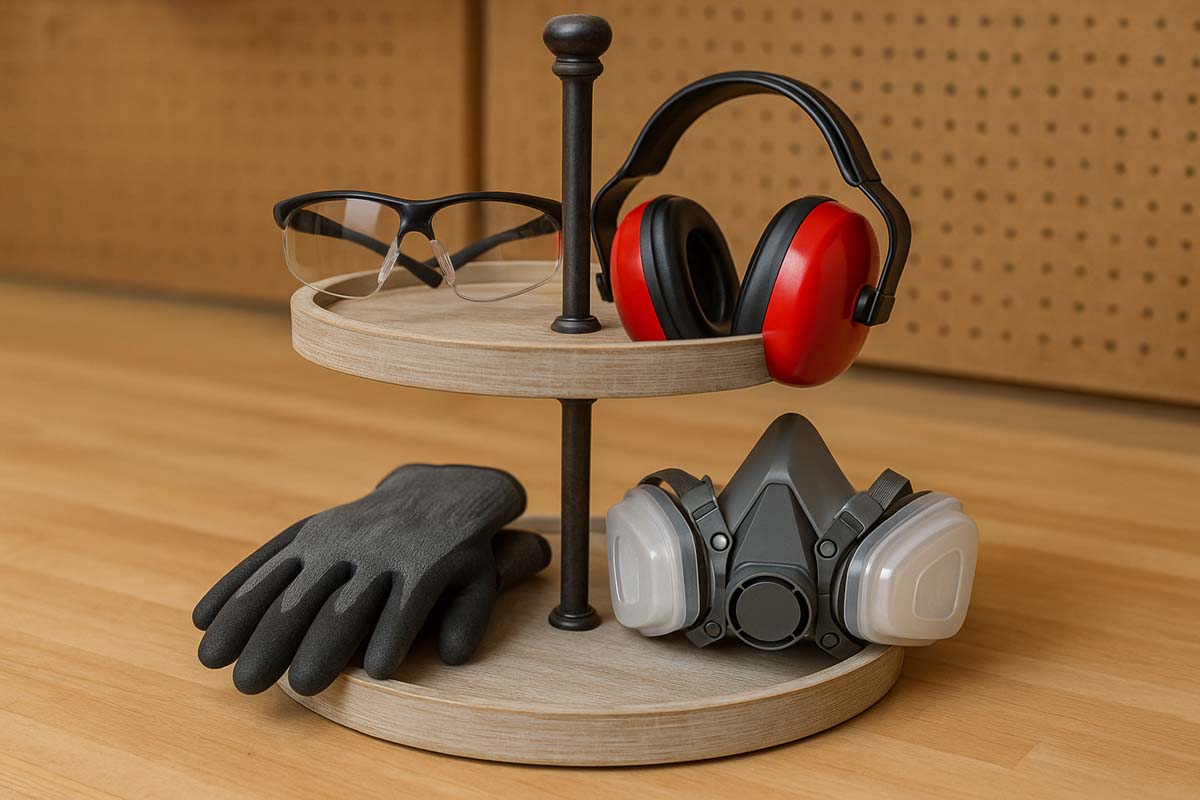
When you’re building a tiered tray stand, safety should always come first. Whether you’re a seasoned woodworker or just getting started with DIY projects, it’s crucial to protect yourself and those around you. In this article, I’ll share the essential safety gear I recommend for any tray stand build. Not only will this help you avoid injury, but it will also make your woodworking experience more efficient and enjoyable.
Building a tiered tray stand can be a fun and rewarding project, but without the right safety precautions, it can quickly turn into a dangerous task. Let’s go over the safety gear I use and recommend to ensure a smooth, injury-free build every time.
Contents Here
- 1 1. Safety Glasses: Protect Your Eyes
- 2 2. Hearing Protection: Keep Your Ears Safe
- 3 3. Dust Mask or Respirator: Breathe Easy
- 4 4. Gloves: Protect Your Hands
- 5 5. Work Apron: Keep Your Clothes and Tools Safe
- 6 6. Non-Slip Work Surface: Stability Matters
- 7 7. Safety Footwear: Keep Your Feet Safe
- 8 8. Tool-Specific Safety Gear
- 9 9. Proper Lighting: See What You’re Doing
- 10 10. First Aid Kit: Be Prepared for the Unexpected
- 11 FAQs about Safety Gear for Tray Stand Builds
- 11.1 Why is safety gear important when building a tray stand?
- 11.2 What safety gear do I need for a tray stand build?
- 11.3 What’s the difference between a dust mask and a respirator?
- 11.4 How loud are woodworking tools, and why should I wear hearing protection?
- 11.5 Is a work apron really necessary for woodworking?
- 11.6 Can I use regular gloves instead of specialized woodworking gloves?
- 12 Conclusion
1. Safety Glasses: Protect Your Eyes
One of the first pieces of safety gear I recommend is a good pair of safety glasses. It doesn’t matter if you’re working with a saw, drill, or sander — flying wood chips or dust can cause serious eye injury if you’re not properly protected.
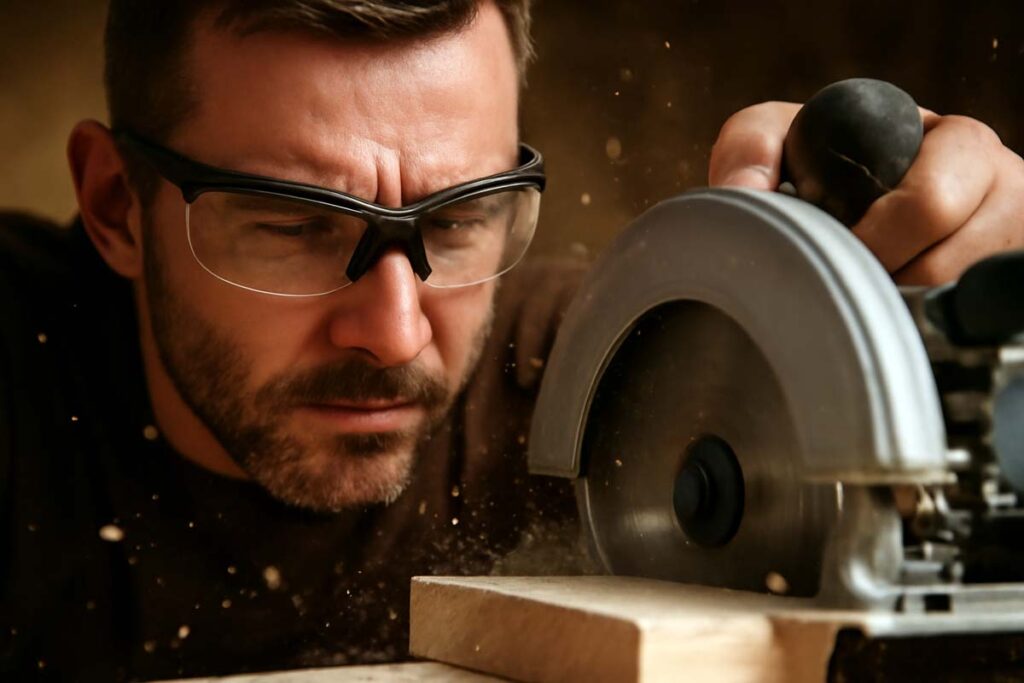
Why you need them:
- Protects against wood debris.
- Prevents sawdust and other particles from getting in your eyes.
- Ensures clear visibility while working, especially in dusty conditions.
When choosing safety glasses, look for ones that offer a comfortable fit and have impact resistance. Many safety glasses also come with anti-fog lenses, which is a big plus when working in humid or hot environments.
2. Hearing Protection: Keep Your Ears Safe
Power tools can be incredibly loud, and extended exposure to high noise levels can lead to permanent hearing loss. While building a tiered tray stand, you’ll likely use a variety of tools like saws, drills, and sanders — all of which generate high noise levels.
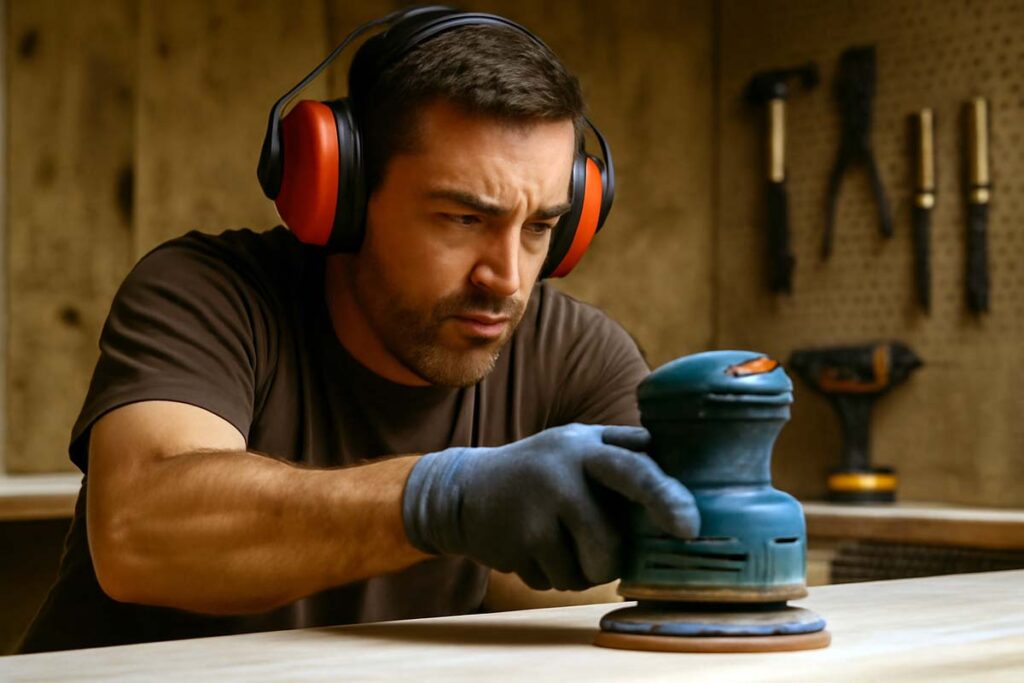
Why you need them:
- Protects hearing from long-term damage.
- Reduces noise pollution in your workspace, allowing for better focus.
- Keeps your ears safe from tools like circular saws, drills, and routers.
I always reach for earmuffs or earplugs whenever I start up loud equipment. For extra comfort, opt for earmuffs with adjustable headbands, and make sure they seal well around your ears to block out more noise. You can find models with built-in radio or Bluetooth capabilities, which are nice if you like to listen to music or podcasts while you work.
3. Dust Mask or Respirator: Breathe Easy
Woodworking creates a lot of dust, which can be harmful to your lungs if inhaled over time. A dust mask or respirator is essential, especially when sanding, cutting, or routing.
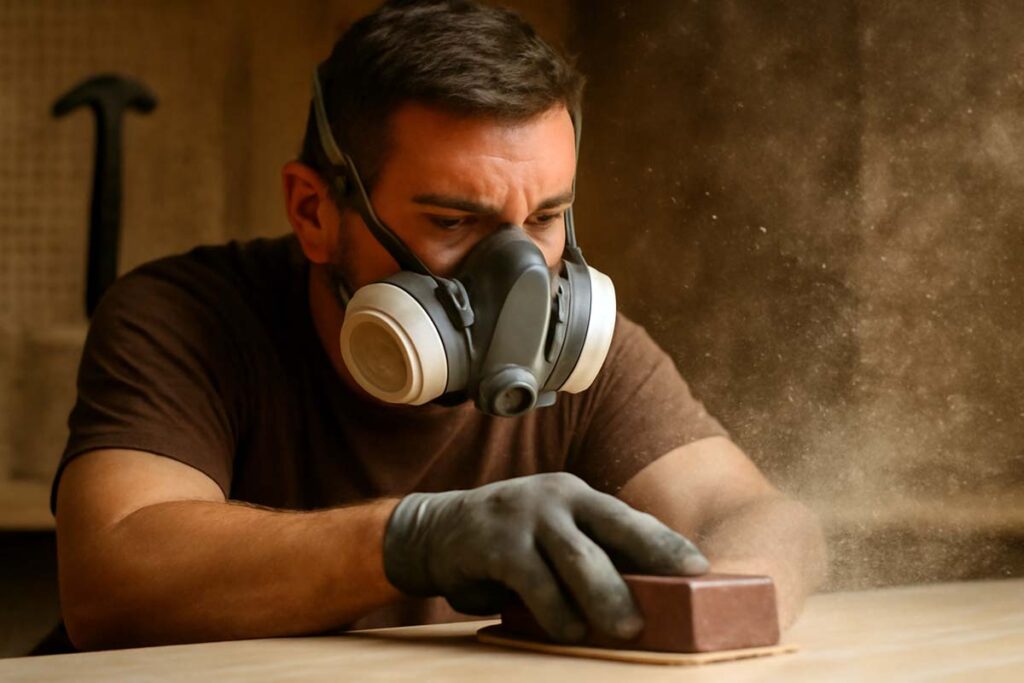
Why you need them:
- Prevents inhalation of harmful dust particles.
- Protects your lungs from long-term damage.
- Provides comfort while working in dusty environments.
If you’re working with materials like MDF (Medium Density Fiberboard), plywood, or certain types of hardwood, a good respirator is a must. A simple dust mask may not provide enough protection in these cases, so it’s worth investing in a respirator with a high-efficiency particulate air (HEPA) filter. These respirators fit snugly over your face and filter out the smallest of dust particles.
4. Gloves: Protect Your Hands
When working with wood, sharp edges, and power tools, your hands are vulnerable to cuts, splinters, and abrasions. I always recommend wearing gloves that provide a balance of protection and dexterity.
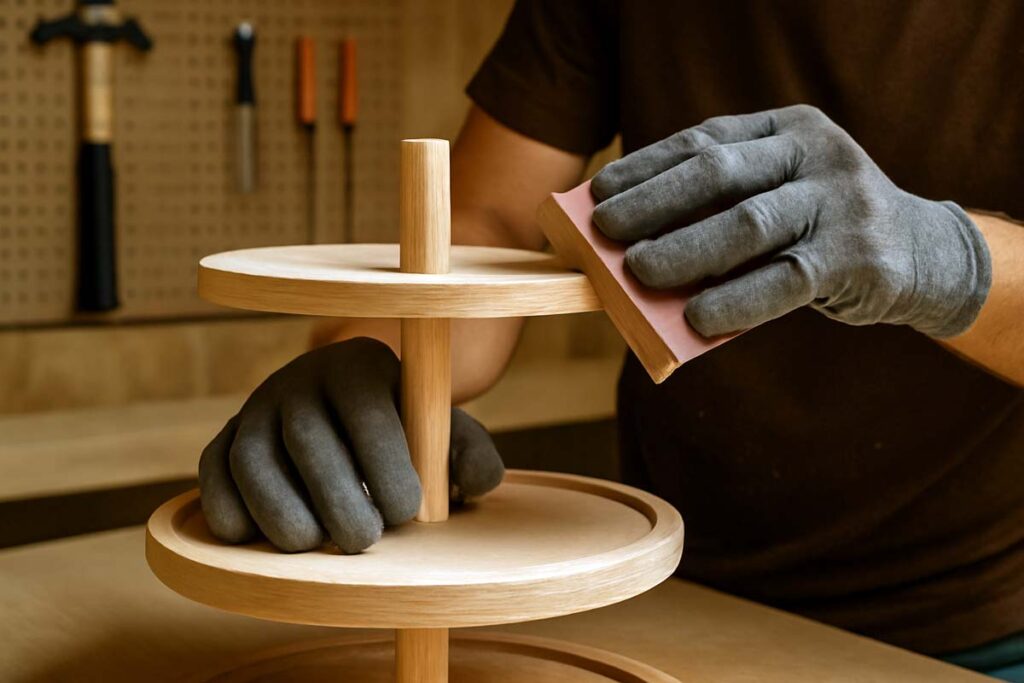
Why you need them:
- Shields hands from cuts, splinters, and abrasions.
- Provides a better grip on tools and materials.
- Reduces fatigue during long work sessions.
For tray stand builds, you’ll be handling a lot of wood, and there’s a good chance you’ll end up with splinters if you’re not careful. I recommend using a pair of heavy-duty leather gloves, which offer excellent protection while still allowing you to handle tools and materials with precision. You can also find gloves with reinforced fingertips for added protection.
5. Work Apron: Keep Your Clothes and Tools Safe
A work apron serves a dual purpose: it keeps your clothes safe from stains, dirt, and wear while providing you with easy access to tools and supplies. When you’re working with sawdust or paints, an apron can also prevent those materials from staining your clothes.
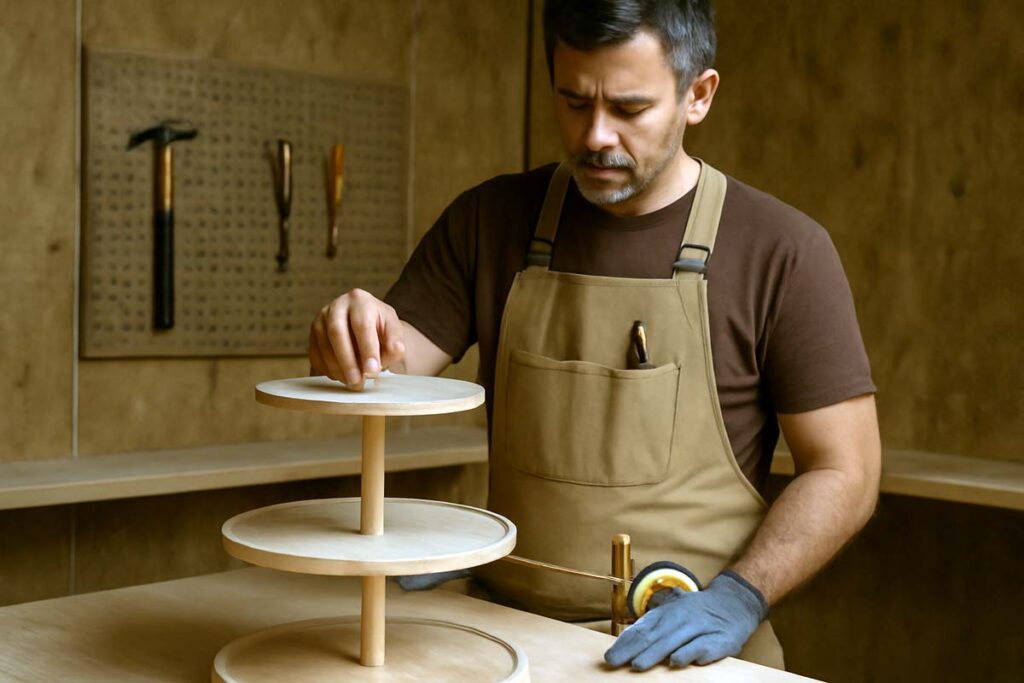
Why you need it:
- Protects clothing from damage and stains.
- Keeps small tools within easy reach.
- Offers added protection from sharp edges or tools that might come in contact with your body.
Look for an apron with multiple pockets to hold essential tools like pencils, rulers, and screwdrivers. This will keep your workspace tidy and help you stay organized while you work.
6. Non-Slip Work Surface: Stability Matters
While not technically “gear” in the traditional sense, a stable and non-slip work surface is key to building a safe tray stand. You want your wood and tools to stay firmly in place while you’re working, which can help prevent accidents or mistakes.
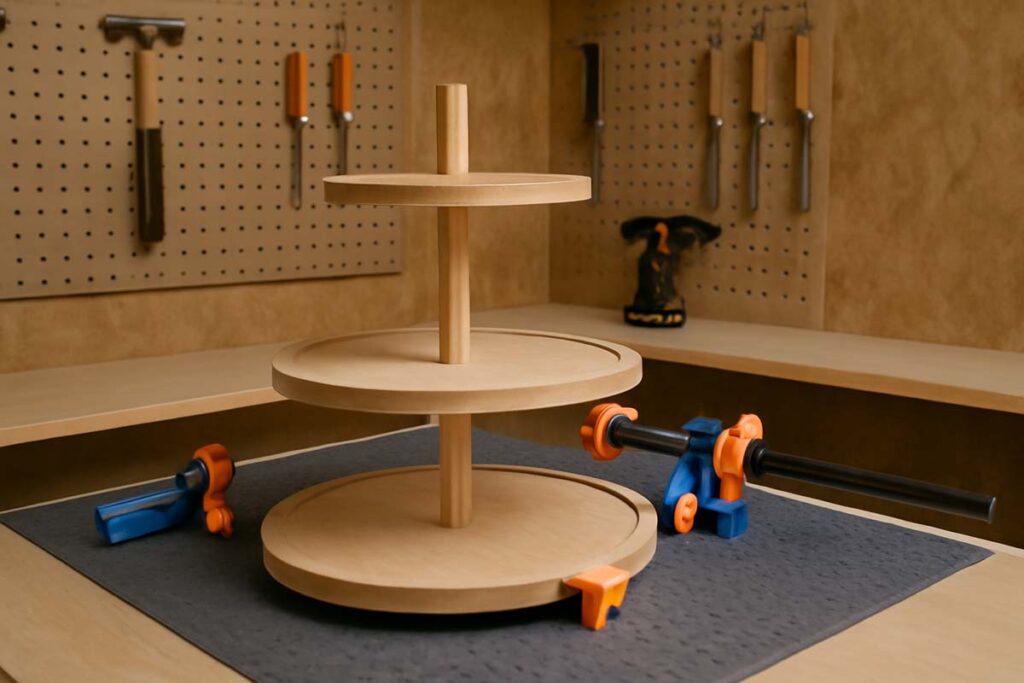
Why you need it:
- Prevents wood from sliding or shifting during cutting or sanding.
- Reduces the risk of tool accidents due to unstable surfaces.
- Keeps everything in place for smoother, more accurate work.
I recommend using a workbench with a non-slip mat or surface. You can also buy specialized tool mats that will keep your wood in place and give you a stable, safe working area. Additionally, consider clamping your project down whenever possible, especially when using power tools.
7. Safety Footwear: Keep Your Feet Safe
You might not think about your feet when working on a tray stand, but the risk of injury is real. Whether you’re dropping a heavy tool or stepping on a sharp nail, proper footwear can save you from serious injury.
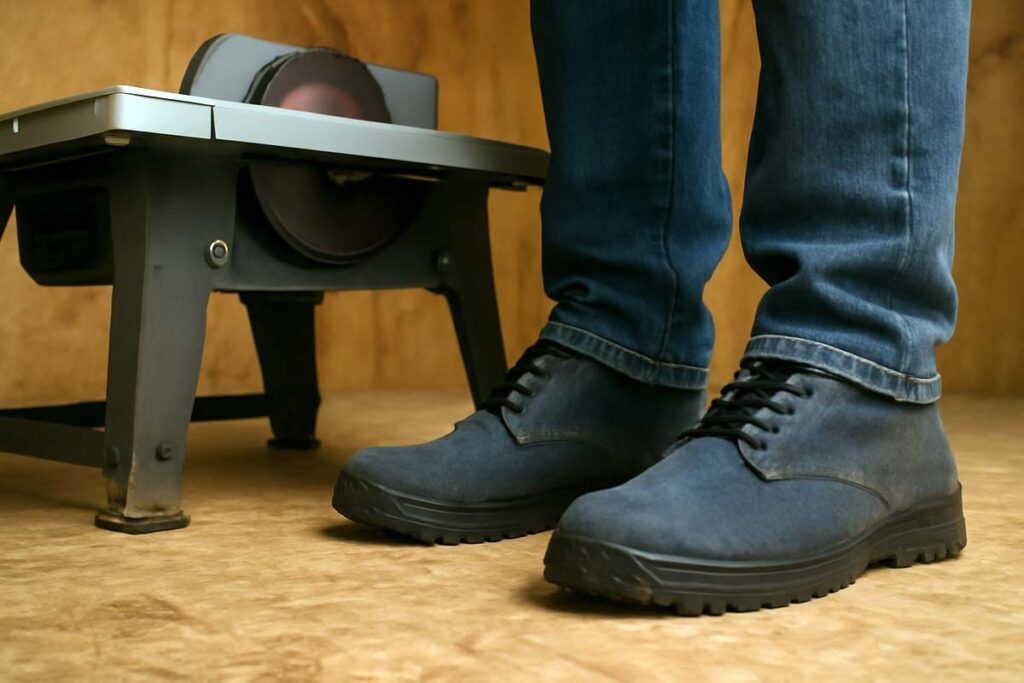
Why you need them:
- Prevents injury from heavy objects falling on your feet.
- Protects against nails, screws, and other sharp objects.
- Provides support and comfort during long work sessions.
Always wear sturdy, closed-toe shoes with a non-slip sole. Steel-toe boots or shoes are a great choice if you want extra protection. They’re particularly helpful when using heavy tools like hammers, saws, or drills.
8. Tool-Specific Safety Gear
Depending on the tools you’re using for your tray stand build, you may need additional safety gear. For example, when using a table saw or circular saw, a blade guard or push stick is essential to keep your hands safe while cutting.
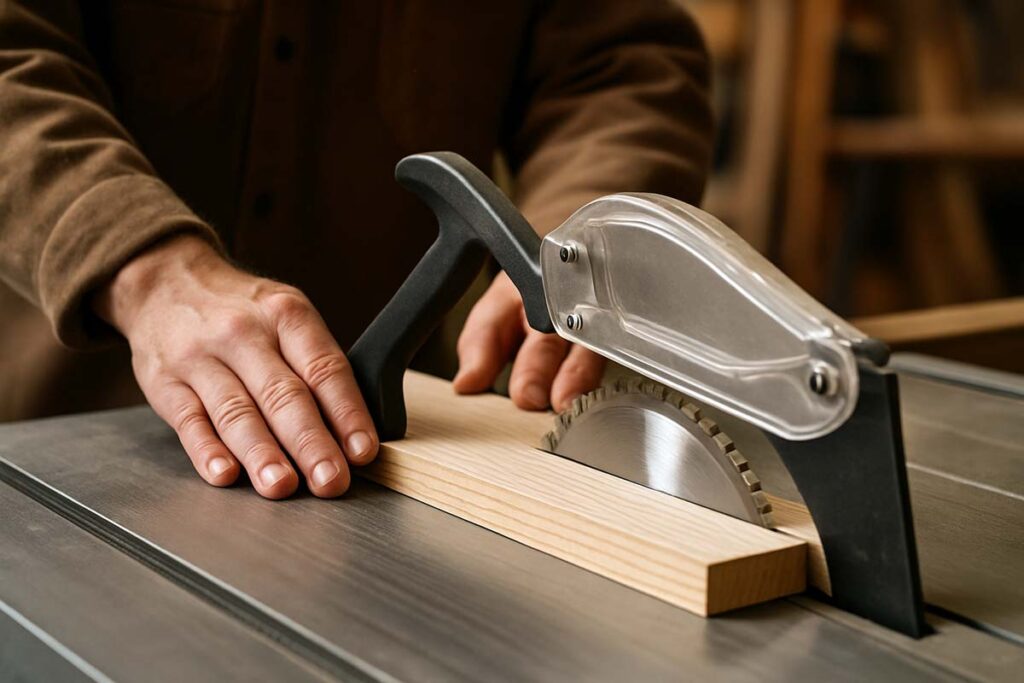
Why you need them:
- Prevents hands from getting too close to the cutting blade.
- Increases control over materials when cutting or shaping.
- Reduces the likelihood of kickback or tool-related accidents.
Before you start any project, familiarize yourself with the safety guidelines for each specific tool you plan to use. If you’re unsure, check the user manual or watch tutorials to ensure you’re using the tool safely.
9. Proper Lighting: See What You’re Doing
Adequate lighting is often overlooked but plays a crucial role in ensuring safe, accurate work. Poor lighting can lead to mistakes or accidents because you might not see clearly enough to make precise cuts or measurements.
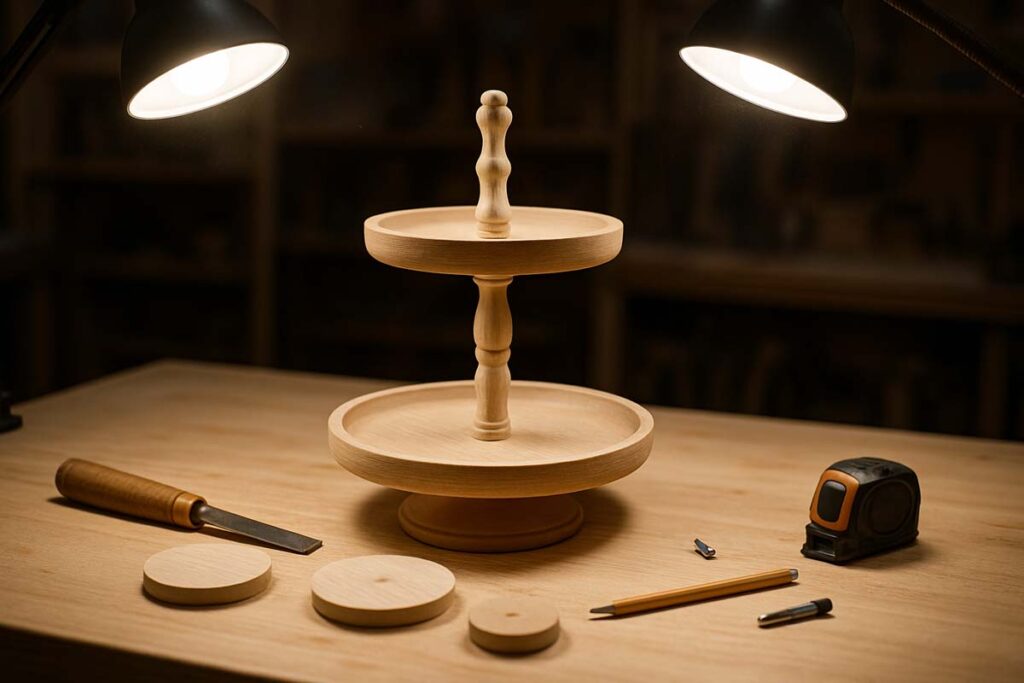
Why you need it:
- Provides better visibility, especially for fine details.
- Reduces eyestrain during long work sessions.
- Increases accuracy and precision in your builds.
Make sure your workspace is well-lit, especially when working with intricate details on your tray stand. Consider installing overhead lighting, task lights, or even portable LED work lights that you can position where you need them most.
10. First Aid Kit: Be Prepared for the Unexpected
Even with all the safety gear, accidents can still happen. A well-stocked first aid kit is a must-have for any woodworker, whether you’re working in your garage or a professional workshop.
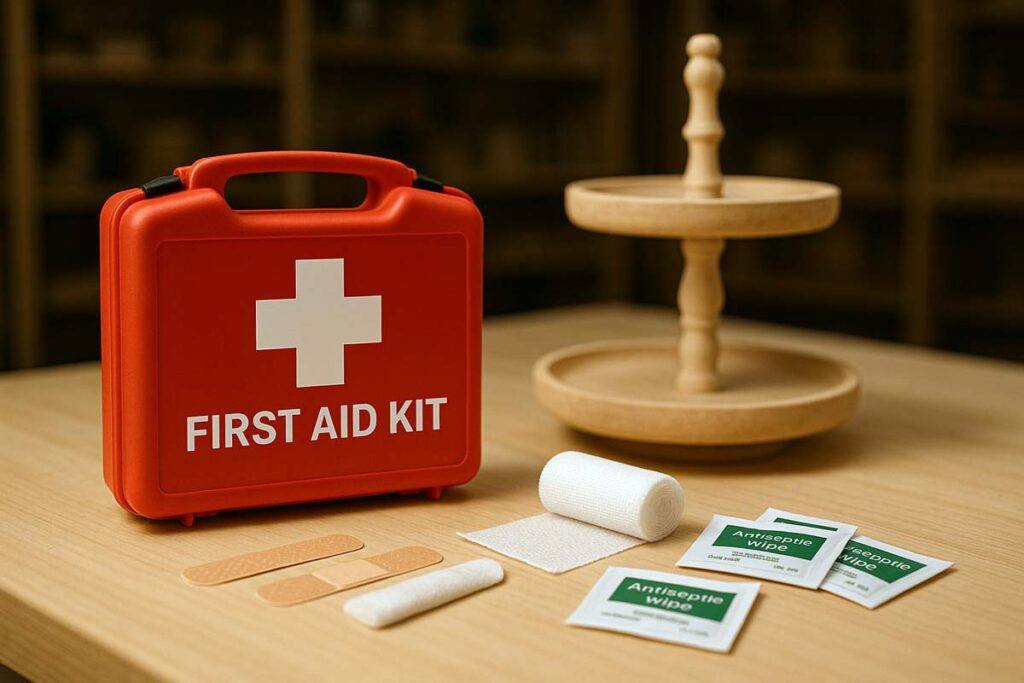
Why you need it:
- Ensures you’re prepared in case of minor injuries.
- Provides the supplies needed to handle cuts, scrapes, or burns.
- Gives you peace of mind knowing you’re ready for anything.
Make sure your first aid kit is stocked with bandages, antiseptic wipes, gauze, adhesive tape, and, most importantly, a pair of scissors for cutting tape and bandages. Having it nearby means you can quickly respond to any injuries that may occur during your build.
FAQs about Safety Gear for Tray Stand Builds
Conclusion
Building a tiered tray stand is a rewarding project, but it’s important to prioritize safety. By using the right safety gear, you can protect yourself from potential injuries and work more efficiently. Whether you’re protecting your eyes, ears, hands, or feet, each piece of safety gear serves a crucial purpose in ensuring a safe and successful build.
When you’re well-equipped with the right tools and safety measures, you’ll enjoy a safer, more enjoyable woodworking experience. Stay safe, stay focused, and happy building!

